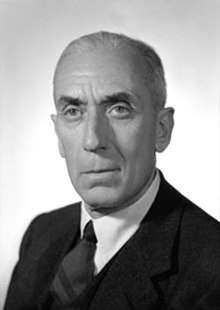Raffaele Cadorna Jr.
Raffaele Cadorna Jr. (12 September 1889 in Pallanza – 20 December 1973 in Rome) was an Italian general who fought during World War I and World War II. He is famous as one of the commanders of the Italian Resistance against German occupying forces in north Italy after 1943.[1]
Raffaele Cadorna Jr. | |
|---|---|
 | |
| Member of the Italian Senate | |
| Constituency | Verbano-Cusio-Ossola |
| Personal details | |
| Born | September 12, 1889 Verbania, Italy |
| Died | December 20, 1973 (aged 84) Rome, Italy |
| Nationality | Italian |
| Political party | Christian Democracy |
| Relations | Luigi Cadorna, Raffaele Cadorna |
| Alma mater | Military Academy of Modena |
| Profession | Military officer |
| Awards | |
| Website | Senate website |
| Military service | |
| Allegiance | |
| Branch/service | |
| Years of service | 1909–1947 |
| Rank | Lieutenant General |
| Commands | Ariete Armoured Division CLN |
| Battles/wars | Italo-Turkish War World War I World War II Italian Civil War |
Early life
Cadorna was born in Verbania in 1889, the son of the First World War Field Marshal Luigi Cadorna and grandson of General Raffaele Cadorna. In 1909 he was named Sub-Lieutenant, becoming part of the Italian troops that fought the Italo-Turkish War. During the First World War, he was a Lieutenant and later promoted to Captain. In the early years of the 1920s, he was part of the Allied commission for the new border of Germany. He was later named military attaché to the Italian embassy in Prague.
In 1935 he opposed the decision of Benito Mussolini to invade Ethiopia. Two years later he was promoted to the rank of colonel as commander of Italy's 3rd Cavalry Regiment, the Savoia Cavalleria.
Second World War
During the early years of World War II, he took part in some actions against France, and was then named commander of the school of cavalry in Pinerolo. In September 1943, he was named commander of the rebuilt Armoured division Ariete, one of the strongest divisions of the Regio Esercito. After the Armistice of Italy, the Ariete Division participated in the defense of Rome against the German attack, but was disbanded after the military commander of Rome, General Calvi di Bergolo, had signed a ceasefire with the German commands.[2]
On 11 August 1944 he was parachuted into Val Cavallina near Bergamo and appointed Military commander of the Gruppo Volontari per la Libertà ("Group of Volunteers for Freedom"), with Ferruccio Parri, and deputy commander Luigi Longo, in north central Italy.[3] Captain W O Churchill was seconded by Special Operations Executive (1944/45 Operation Floodlight) to act as British Liaison Officer to General Cadorna at the request of the CLNAI in northern Italy.[3][4]
In April 1945, he was a member of the partisan delegation that tried to reach an agreement with Mussolini in the archbishop's palace of Milan.
On 15 June 1945 he was awarded the Patriot's Certificate, a decoration reserved to those who had contributed to the Italian resistance movement. He was also awarded the Legion of Merit - Degree of Commander for service between September 1943 to May 1945 (General Order 124, 27 December 1945).
On July 1945 he was named chief of staff of the Italian Army. In 1947 he resigned from this post due to different points of view with the Minister of Defence.
Later life
From 1948 to 1963 he was a senator of the Christian Democracy party. He died in Rome in 1973.
Bibliography
- Giuseppe Sircana, «CADORNA, Raffaele». In: Dizionario Biografico degli Italiani, Volume 34, Roma: istituto dell'Enciclopedia Italiana, 1988
See also
- Italian Social Republic
- Enrico Martini, a fellow recipient of the Bronze Star Medal.
References
- Indro Montanelli, Roberto Cervi, Storia d'Italia, Rcs Quotidiani, 2003.
- Ariete II div.cor.di cavalleria
- The National Archives : HS 9/253/7 - Raffaele CADORNA
- Secondment of Captain W O Churchill to Operation Floodlight (see footnote)